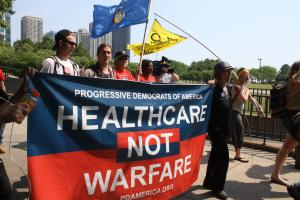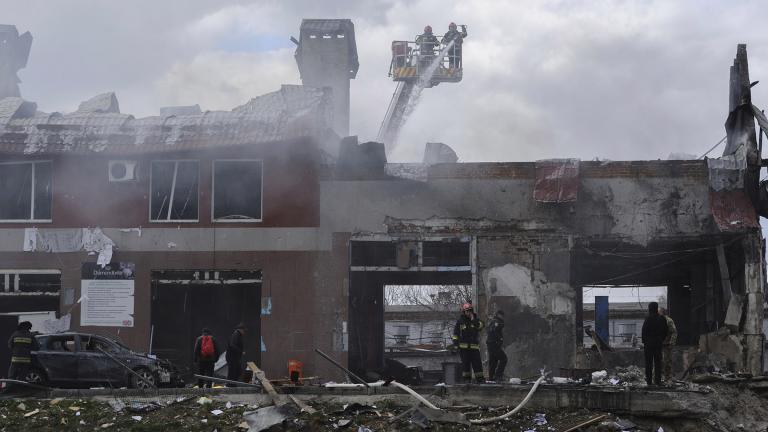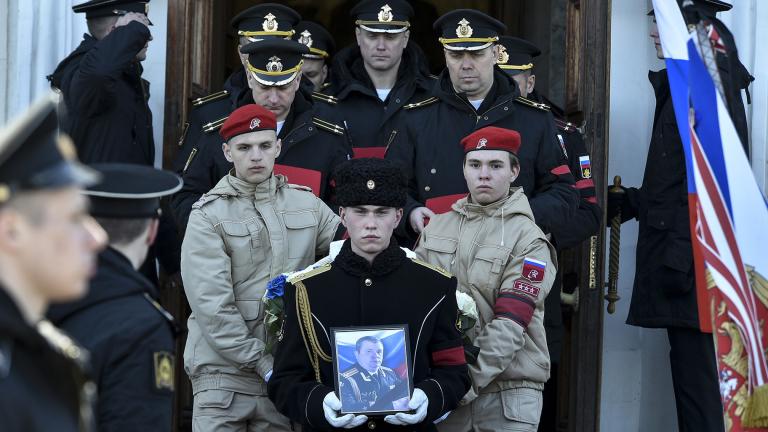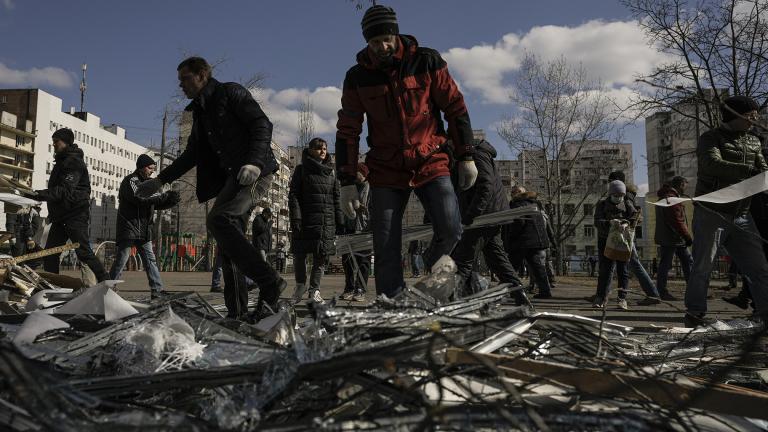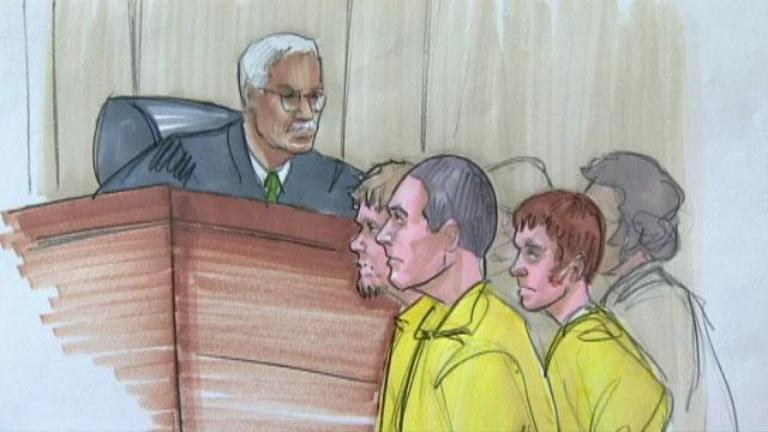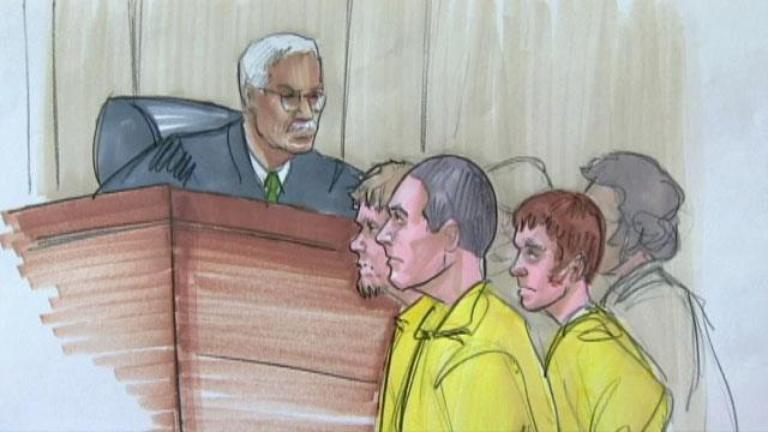 In the aftermath of the NATO summit, attention will undoubtedly focus on the relatively small sub-section of protesters who did not disperse after the march’s end in the late hours of May 20, as thunder rolled over Michigan and Cermak, and eventually engaged in violent confrontations with police officers. Ultimately, 45 protesters were arrested by the Chicago Police Department.
In the aftermath of the NATO summit, attention will undoubtedly focus on the relatively small sub-section of protesters who did not disperse after the march’s end in the late hours of May 20, as thunder rolled over Michigan and Cermak, and eventually engaged in violent confrontations with police officers. Ultimately, 45 protesters were arrested by the Chicago Police Department.
But these individuals represent just a fraction of the thousands who devoted their Sunday to protesting the NATO summit. The protesters were far from monolithic – dominated by Occupiers and anti-war activists, the group also included veterans from Vietnam, Iraq and Afghanistan, feminists, nurses, Socialists, Communists, critics of the Obama administration’s use of drones, and those calling for an intervention in Syria.
The day started off with a rally at Butler Field, in Grant Park, that drew about 2,000 protesters, onlookers, and members of the media. Organized by the Coalition Against the NATO War & Poverty Agenda – known as CANG8 – the rally had a celebratory, laid-back quality, distinct from the more political tone of the march through the Loop that followed.
Along with the protesters were families with young children and dogs, tourists, and curious residents from the area. Along with picket signs were picnic blankets. Clad in neon orange T-shirts and baseball caps, observers from the American Civil Liberties Union (ACLU) mingled with protesters, handing out business cards in case of any legal need.
Many protesters expressed one common concern: that, in the U.S. and around the world, money is flowing in the wrong direction.
Kellie Stewart, a protester from St. Croix Falls, Wisconsin, said NATO’s military budget could be better used on “the people.”
“Where is this money going?” she said. “We need it back to help us have equal rights.”
Brien Redmon, a protester from St. Louis, said military spending at this scale, in this day and age, is futile.
“We’ve been doing this war thing for centuries, and it has not worked,” he said. “We need to try something new.”
Signs at Grant Park ranged broadly in politics and levels of intensity. In addition to the “We are the 99%” signs that have become common fare at protests like this, were signs reading “Fuck NATO” and “North Atlantic Terrorist Organization.” Other signs called for NATO to re-examine itself as an institution: “NATO: please redefine your role,” “Humanitarian war doesn’t exist,” and “Fund the wounded, not the war.”
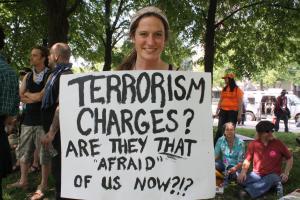
When asked whether it’s possible that those charged had violent intentions for the protests, Willman said this wasn’t the issue.
“The FBI set them up in the first place,” she said. “The issue is our government implanting people, taking advantage of people, and using them as an example just to keep us afraid.”
Other protesters complained that, in the coverage of the summits, the larger political and conceptual messages of the protesters were ignored in favor of less important logistical and local concerns.
“The anti-war, anti-austerity message is being ignored,” said Chicago protester Steve Craig. “The media coverage is all about traffic, street closings, cops. It’s people from the mayor’s office. It’s a People magazine approach to ‘who’s who’ in NATO.”
Craig also took part in a rally on Friday organized by National Nurses United, the country’s largest nurses’ union. That protest called for a “Robin Hood” tax on banks’ financial transactions to strengthen the healthcare system.

One group, “Grannies at the G8, Nanas at NATO, Women in the Street,” was made up of women dressed in clothes from different periods of feminist history; for instance, a Susan B. Anthony-era suffragette, June Cleaver, and Rosie the Riveter.
Collectively, the women represented “a complete timeline of women, from Suffragettes to the Occupiers,” said Arianna Norris-Lanbry, dressed as a suffragette. “We’re showing that women have been in the streets fighting for rights for over 150 years. And we still don’t have them.”
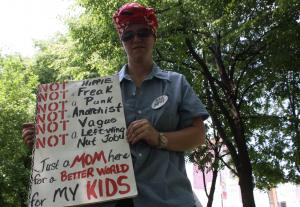
Another protester, Dustin Axe, called out the need for education reform.
“All the resources and money is siphoned off from people’s everyday needs – including education and public services – for wars that I don’t think are justified,” Axe said.
An educator at the Museum of Science and Industry, Axe works with students from around the Chicago area and witnesses the education gap firsthand. Many Chicago Public Schools students, he said, have never seen a telescope in their lives until they visit the museum, while kids from other schools are bestowed with all the science education resources imaginable.
He said noting that gap was his fuel for coming to the protests. His homemade sign? “Smart kids, not smart bombs.”

